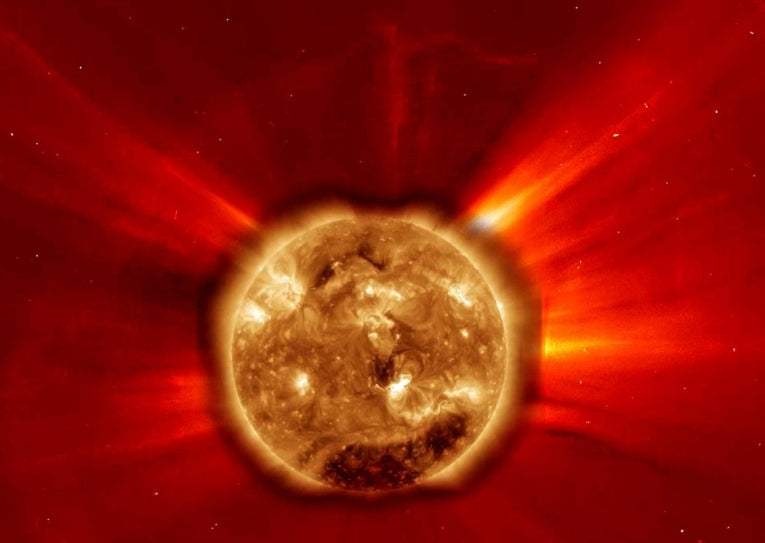Credit: NASA/SDO/SOHO
Something has been rumbling in the solar furnace of late, as the Sun sloughs off its recent sleep, and comes back to life after a record-breaking solar minimum. With solar flares back in the news, and many worried about their potential impacts on communications and power grids, a timely new study, from the Harvard-Smithsonian Center for Astrophysics, is revealing the hidden dynamics at play in our very own star, the Sun.
Changes in the activity of the Sun have been noted for hundreds of years – an 11-year cycle of sunspots following a steady rhythm of peak and trough. When the surface is most active (the solar maximum) dark sunspots are clearly visible on, even with telescopes. These are associated with mammoth eruptions of plasma, known as solar flares. It is these that cause magnetic storms that can knock-out satellites, or even electrical power grid.
Just recently, though, we have been through a solar minimum, a time when sunspot activity halts – and with it the solar flares. The stream of particles coming from the Sun, the solar wind, also slows down; and that causes the cosmic rays to penetrate the earth's magnetic field. That may have subtle rhythmic effects on the earth's climate.
What has been interesting about this latest solar minimum is its length. On average they extend for 300 days, but this minimum has exceeded 700 days. This has left scientists at a loss to explain the behavior. Now a team led by Andres Munoz-Jaramillo, have developed a computer model that nails the unusual pattern – and so provides a better understanding of what's going on inside the Sun.
The model focused on the flow of massive plasma rivers that slide from the Sun's equator towards its poles. At the stately pace of 40 mph, they take 11 years to complete this loop, which matches the solar cycle's rhythm. The team's models have found that it is the variable speed of these looping currents that determines the length of the solar minima.
Complicated interactions with the Sun's magnetic fields can cause these rivers to speed up, in the first part of the cycle, and then to slow down in the latter half. This stretches out the solar minimum. Whilst the impact of solar cycles on climate change is still thought to be negligible, especially compared to that of man-made effects, a better understanding of the Sun's dynamic can only help firm up climate scientists' models.










